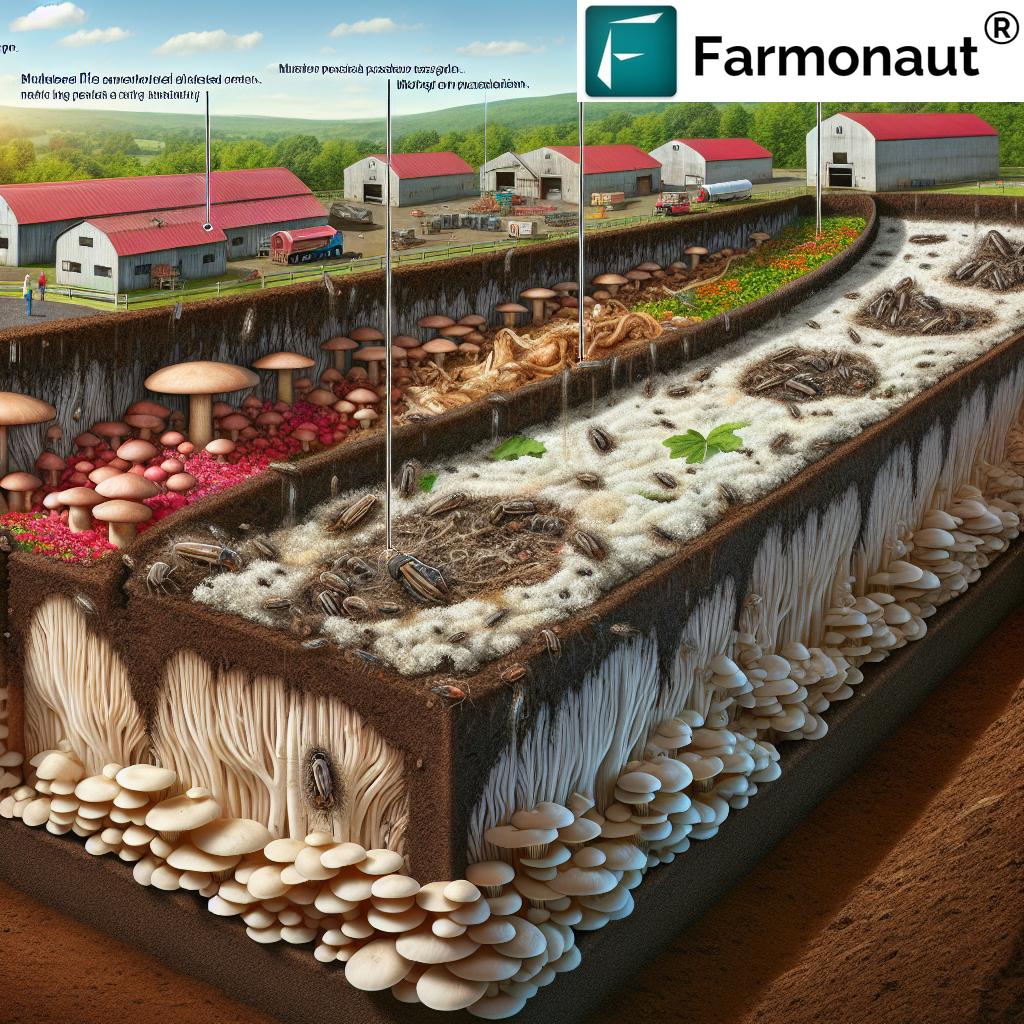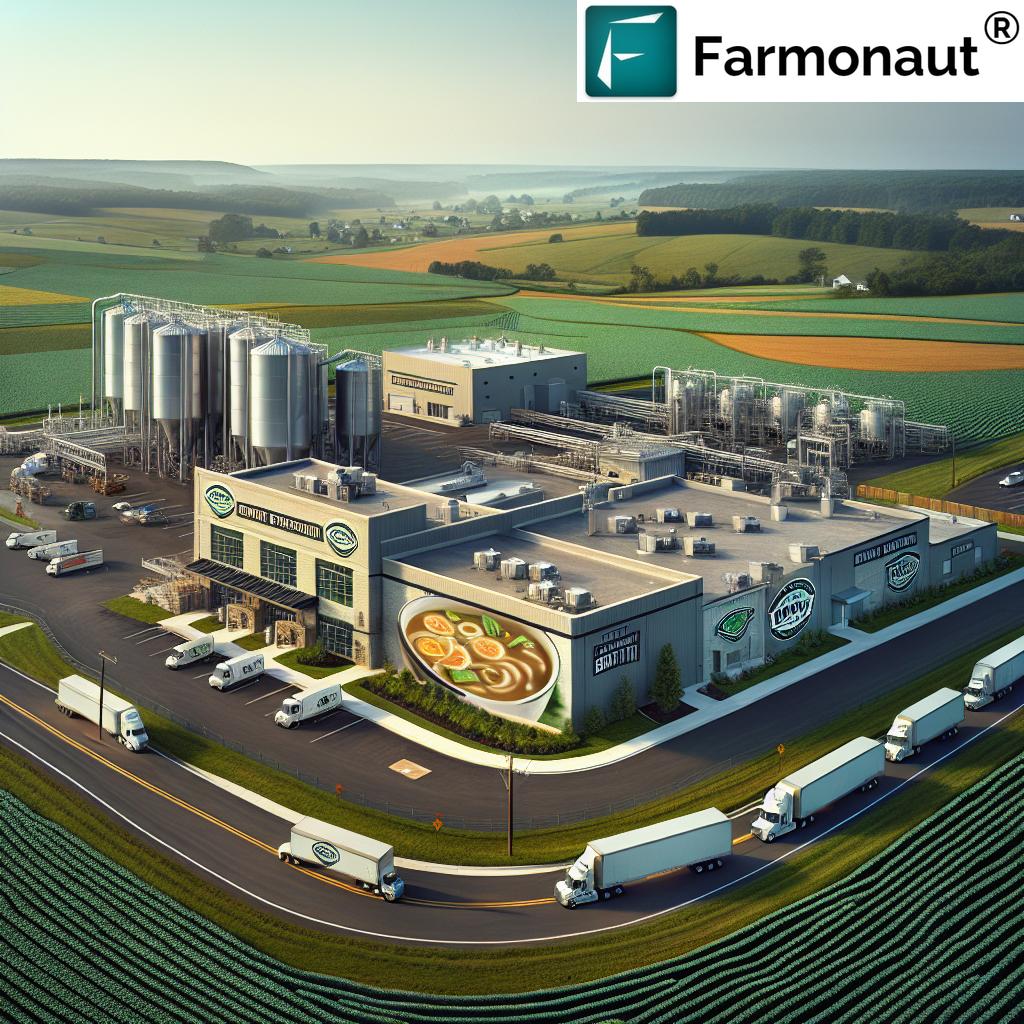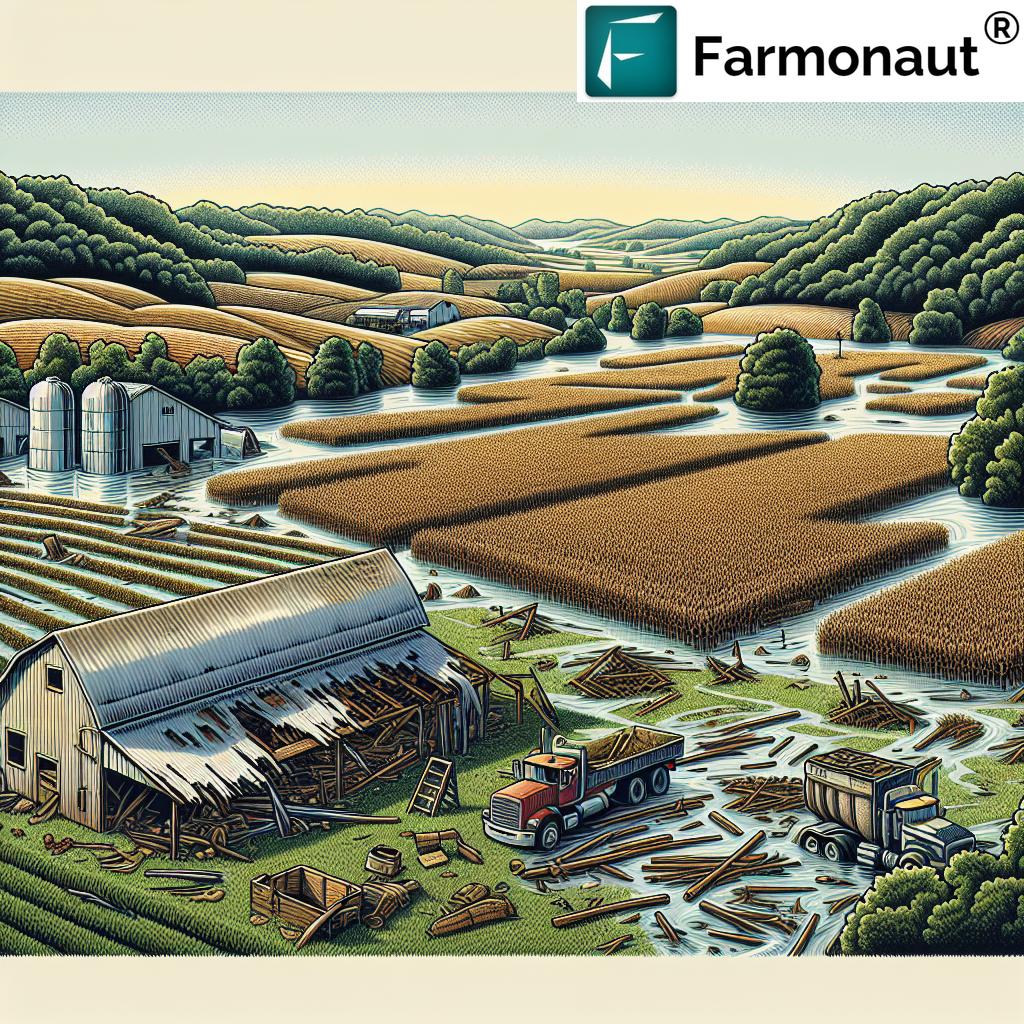Baling Alfalfa Moisture, California Alfalfa Water Use Tips (2025): Optimizing Hay Quality, Sustainability & Irrigation Efficiency
“Baling alfalfa at 16-18% moisture can increase hay nutritional value by up to 20%, reducing spoilage risk.”
Introduction: The Critical Role of Alfalfa & Sustainability in California’s Agriculture (2025)
In the heart of the United States’ agriculture, California stands as the largest alfalfa producer, underlining the crop’s importance to the state’s dairy and livestock industries. As one of the most water-demanding forage crops, alfalfa is essential for feeding cattle and supporting agricultural sector profitability. However, with ongoing water scarcity, increasing drought challenges, and climate change pressures, both baling alfalfa moisture and California alfalfa water use are now under the spotlight.
This comprehensive guide explores optimizing moisture during baling and maximizing irrigation efficiency in 2025 and beyond. It integrates sustainability themes, practical tips, and examples relevant to every step of alfalfa production—from the field to the bale.
Importance of Moisture Management in Alfalfa Baling
Maintaining proper moisture during baling is essential for ensuring hay quality, reducing spoilage, and preventing economic losses. Let’s break down why baling alfalfa moisture is a critical aspect of California’s alfalfa management landscape.
Baling Alfalfa Moisture: The Science Behind Quality Hay
- Moisture Content Range: Alfalfa hay should typically be baled at 15-20% moisture. This range helps in preserving nutritional value and minimizing spoilage.
- Harvesting Above Range: If baled above 20% moisture, the risk of mold growth, heating, and hay deterioration increases. This can render hay unsafe for animal consumption and cause economic losses.
- Baling Too Dry: If overly dry (<15%), leaf shatter increases, leading to a loss of the most digestible plant parts and lowering hay quality and value.

Why Proper Baling Moisture Remains Central in California Agriculture
The imperative to optimize moisture levels isn’t just about preserving hay, but is intimately tied to sustainable crop management in 2025 as climate variability and water scarcity persist.
- Unpredictable Weather: Field assessments, timely use of moisture meters, and new technologies reduce the risks of field-to-bale delays, especially as weather grows unpredictable in many California regions.
- Harvest Synchronization: By integrating real-time data and weather forecast modeling, farmers are synchronizing cutting, drying, and baling with unprecedented precision.
- Economic Benefit: Quality hay commands a premium, minimizes waste, and guarantees sustainable profits.
Related: Our Large-Scale Farm Management App empowers users with satellite-based real-time crop health and moisture analytics. This tool helps synchronize harvest schedules and baling windows precisely, maximizing hay quality and resource efficiency.
The Essential Tools for Measuring and Managing Baling Moisture in 2025
- Handheld Moisture Meters: Still widely used for quick, on-the-spot readings before baling.
- On-Baler Sensors & Smart Equipment: Modern balers increasingly come equipped with integrated sensors, providing instant feedback as bales are formed.
- Remote Sensing & AI: Satellite imagery and remote sensing platforms deliver field-wide moisture and crop status analytics, enhancing decision-making.
By 2025, these technologies are combining to help California alfalfa farmers determine the optimal window for cutting and baling—preserving both quality and profitability.
Discover how carbon footprint tracking can be integrated with soil moisture and crop analytics to promote sustainable alfalfa production. Farmonaut’s solutions help stakeholders monitor resource utilization while minimizing environmental impact.
California Alfalfa Water Use: Challenges & Modern Approaches
California alfalfa water use highlights the balancing act between sustaining agricultural productivity and ensuring environmental sustainability. The state faces persistent water scarcity, tight regulatory restrictions on irrigation, and intense drought, all exacerbated by climate change.
- High Water Requirements: Alfalfa is a deep-rooted crop with high evapotranspiration rates and a significant need for supplemental irrigation.
- Annual Water Usage: Many fields require water exceeding 4 acre-feet per acre annually, especially during long, dry California summers.
- Regulatory Compliance: State and federal mandates drive the adoption of more efficient water use strategies.
Utilizing the latest Farmonaut API and Developer Documentation, farm management systems can integrate real-time satellite weather and soil moisture data for precision irrigation scheduling and risk reduction.
Modern Irrigation Practices for Sustainable California Alfalfa Water Use
- Drip and Micro-sprinkler Systems: Targeted water delivery directly to the alfalfa root zone, reducing runoff and losses.
- Soil Moisture Sensors: Precise tracking of root zone moisture for optimal application timing.
- Deficit Irrigation: Strategic reduction of water during non-critical growth stages, balancing water use efficiency and hay yield.
California’s alfalfa growers are rapidly adopting these technologies to ensure sustainability and profitability in the face of harsher droughts and tighter water supplies.
“California alfalfa farmers using precision irrigation reduce water usage by up to 30%, enhancing sustainability and crop yield.”
Tip: Farmonaut’s Crop Plantation & Forest Advisory Platform assists California farmers with real-time farm health, irrigation risk alerts, and harvest timing recommendations.
Optimal Moisture Levels and Estimated Water Use for California Alfalfa (2025)
Note: 1 acre-foot ≈ 12 inches of water. These are estimated values for California alfalfa fields in 2025 using advanced moisture and irrigation management.
Integrating Moisture & Water Use Strategies for Sustainability
How Baling Alfalfa Moisture, California Alfalfa Water Use Strategies Interact
The interconnected nature of moisture and water management is fundamental for sustainable alfalfa production in California. Effective integration of real-time sensor data, satellite analytics, and weather forecasting empowers farmers to make informed decisions about both irrigation and harvest windows.
- Over-Irrigation: Can lead to excessive plant water content at harvest, extending drying times, and increasing risk of mold during baling.
- Under-Irrigation: May reduce biomass and lower the plant’s nutritional value.
- Integrated Farm Systems: Using real-time satellite monitoring, Farmonaut’s AI-based advisory tools, and blockchain-based traceability help minimize risks and optimize resource use.
Our blockchain-powered Product Traceability Solution ensures record-keeping and transparency for every bale—an essential step as more regulations and sustainability requirements shape California agriculture.
- Remote Sensing: Consistently ranks as the most effective tool for field-wide tracking of moisture levels, growth stage, and identifying heat/drought stress before harvest.
- Farm Management Software: These systems allow for timely field-level decisions, improving both the cutting schedule and water budgeting process.
- Precision Practices: Integrate soil testing, AI modeling, and remote crop surveillance to cut back on unnecessary water applications while protecting quality.
Looking for robust tools to simplify farm logistics? Our Fleet Management System aids in optimizing machine usage and ensuring that cutting, raking, and baling are as efficient as water delivery and crop scheduling.
Balancing Hay Quality, Reducing Losses & Enhancing Profitability
Why Every Percentage Point of Moisture and Water Matters
At its core, alfalfa farming in California revolves around maximizing hay quality and minimizing post-harvest losses. In 2025, the most successful growers are those who best balance timing, water, and plant health. Here’s how the different factors come into play:
- Moisture: The main factor in preserving hay and preventing spoilage. The right content at baling means fewer losses and more value per acre.
- Irrigation Efficiency: Directly reduces costs (labor, water, energy) and environmental impact, safeguarding long-term field viability.
- Precision in Scheduling: Converging field, soil, and crop data allows growers to synchronize baling windows with windrow drying and forecasted weather.
- Leaf Shatter vs. Mold: Harvesting too dry increases leaf loss; too wet increases spoilage risk. Fine-tuning irrigation and window choice prevents both.
Examples of Efficiency in Practice
- Drip Irrigation + Soil Sensors: Many modern California farms in 2025 employ soil sensors that trigger irrigation events only when soil moisture drops below a set threshold, ensuring alfalfa stays in the ‘ideal’ moisture band—lowering annual water use and boosting hay quality.
- App-Driven Forecasts: By integrating satellite-based weather forecast tools right on your phone, you can decide exactly when to swath, rake, and bale—avoiding unexpected storms or hot/dry spells that compromise both water use and bale integrity.
Discover More: Alfalfa, Water, and Future-Tech
Crop loan and insurance verification through Farmonaut’s satellite-based services enable California farmers to document water use and crop development, improving access to financial services and lowering insurance premiums via more sustainable practices.
Precision Technologies & Innovations in 2025
Remote Sensing, AI, and Farm Management for Alfalfa
The future of alfalfa management and irrigation efficiency is built on technological innovation. Let’s explore a few ways that precision agriculture tools are transforming California alfalfa production.
- Satellite Imagery Platforms: Multispectral satellite data delivers real-time field health, soil moisture status, growth stage, and stress detection.
- AI-Based Advisory: Artificial intelligence—like the Farmonaut Jeevn AI system—analyzes various data streams to offer custom recommendations for timing irrigation and harvest.
- Mobile & Web Apps: Empower managers and hired labor to make informed decisions—even remotely—by providing always-accessible field insights throughout the season.
Want direct access to AI-powered, satellite-driven farm analytics? Click below to use our fully-featured platform from your browser:
Automation and Sustainability: What’s Next?
- Smart Irrigation Devices: Automated drip systems, triggered by live weather feeds and soil moisture, allow responsive and minimal water use.
- Drones & UAVs: Field drone flights scan massive acreage, detecting dry spots or potential early harvest risks before they impact operations.
- Drought-Tolerant Alfalfa Varieties: Genetic advances bring new cultivars to California that perform better under deficit irrigation or variable rainfall.
- AI and Blockchain: This combination is powering traceability, financial verification, and ecosystem impact measurement, helping growers access new revenue streams (such as carbon markets).
Smart Irrigation, Drought, and the Future Outlook in California Alfalfa
Meeting the Ongoing Challenge of Water Scarcity
Water scarcity in California will remain a central challenge for alfalfa producers through 2025 and beyond. A sustainable future for the crop depends on combining everything discussed above—integration, innovation, and information sharing.
- Climate-Smart Agriculture: Adaptive scheduling, deficit irrigation, resilient varietals, and precision harvest timing will help sustain the sector even as patterns shift.
- Regulatory Environment: Compliance with water allocations and reporting requirements is eased by automated data collection and blockchain records.
- Sustainable Economics: Reducing water use, lowering post-harvest losses, and optimizing crop value will enhance profitability while shrinking environmental footprints across the state.
Looking Ahead: Diversifying the Alfalfa Ecosystem
- Water Banking & Recharge: Innovations in capturing surplus water for future use will become part of integrated management.
- Multi-functional Landscape Planning: Alfalfa growers may integrate pollinator strips, carbon sequestration fields, or other conservation areas, all tracked and verified using satellite tools.
- Renewable Energy: Hybrid solar-irrigation systems can power pumps and reduce overall emissions.
How We at Farmonaut Empower Sustainable Alfalfa Production (2025 & Beyond)
Farmonaut Tools for Monitoring Baling Alfalfa Moisture, California Alfalfa Water Use
As a satellite technology company, we at Farmonaut enable California alfalfa growers, agronomists, and agri-businesses with:
- Multispectral Crop Monitoring: See field-by-field moisture trends, identify stress, and receive individualized recommendations through our browser, Android, and iOS apps.
- JEEVN AI Advisory: Get real-time weather, irrigation, and harvest suggestions tailored to your land, precisely when you need it.
- Traceability Platforms: Track bale origins, harvest care, and transport chains for compliance, quality control, and sustainability certification.
- APIs and Data Integration: Connect our imagery and advisory stream directly with your farm management or custom business system—scaling up from single-field to regional monitoring.

Our environmental impact monitoring and carbon footprinting tools allow growers and supply chain partners to validate sustainable practices—helping maximize hay value and boost marketing power in a changing global market.
For those managing vast acreage, our large-scale farm management systems deliver true data-driven oversight with minimum manual labor.
Real-World Benefits of Integrated Satellite & AI Solutions:
- Reduce Risk of Losses: By identifying areas at risk for spoilage, drought, or suboptimal moisture before baling.
- Optimize Input Costs: Spend less on water and energy by matching applications to real crop requirements.
- Gain Market Premiums: Meet and document sustainability and traceability standards that are increasingly required by buyers—especially for export hay.
Frequently Asked Questions (FAQ) on Baling Alfalfa Moisture & California Alfalfa Water Use (2025)
1. What is the ideal moisture content for baling alfalfa in California?
The ideal moisture content for baling alfalfa hay is 15-20%. This range minimizes the risk of mold, spoilage, and preserves nutritional value for livestock.
2. How much water does alfalfa require annually in California?
Depending on location and management, alfalfa typically requires 20–36 inches of supplemental irrigation per acre per year, or more than four acre-feet annually in drier, hotter regions.
3. What are the environmental impacts of unsustainable water use in alfalfa farming?
Overuse of water can lead to groundwater depletion, higher emissions from pumping, and ecological stresses downstream. Efficient management preserves both the environment and future productivity.
4. How can farmers reduce hay losses during baling?
By using moisture meters, scheduling harvests with predictive weather models, and employing precision irrigation, losses due to mold or leaf shatter can be greatly reduced.
5. Are there financial incentives for sustainable alfalfa water use in California?
Yes. Many state and federal programs in 2025 offer rebates or technical support for water-saving technologies. Accurate water and crop monitoring also support insurance and loan applications, reducing costs and risk.
Get Started with Farmonaut: Subscription Options & Support
Access advanced monitoring, advisory, and compliance solutions for your alfalfa and water management needs today. Click below to subscribe or explore Farmonaut’s affordable plans and features—tailored to everyone from family-owned fields to multi-thousand-acre operations:
Summing Up: A 2025 Perspective on Baling Alfalfa Moisture & California Alfalfa Water Use for Sustainability
As California’s water crisis intensifies and the demand for high-quality forage grows, optimizing baling alfalfa moisture and managing irrigation are no longer optional—they are central pillars of economically viable, sustainable alfalfa production. Through the integration of advanced technologies, data-driven farm management, and an unwavering commitment to environmental stewardship, we all play a vital role in safeguarding both the profitability and ecological integrity of California’s agricultural landscape.
Embrace the future—make every drop of water and every percentage of moisture count. For more, try our web or mobile app, and join the movement for a resilient California.












